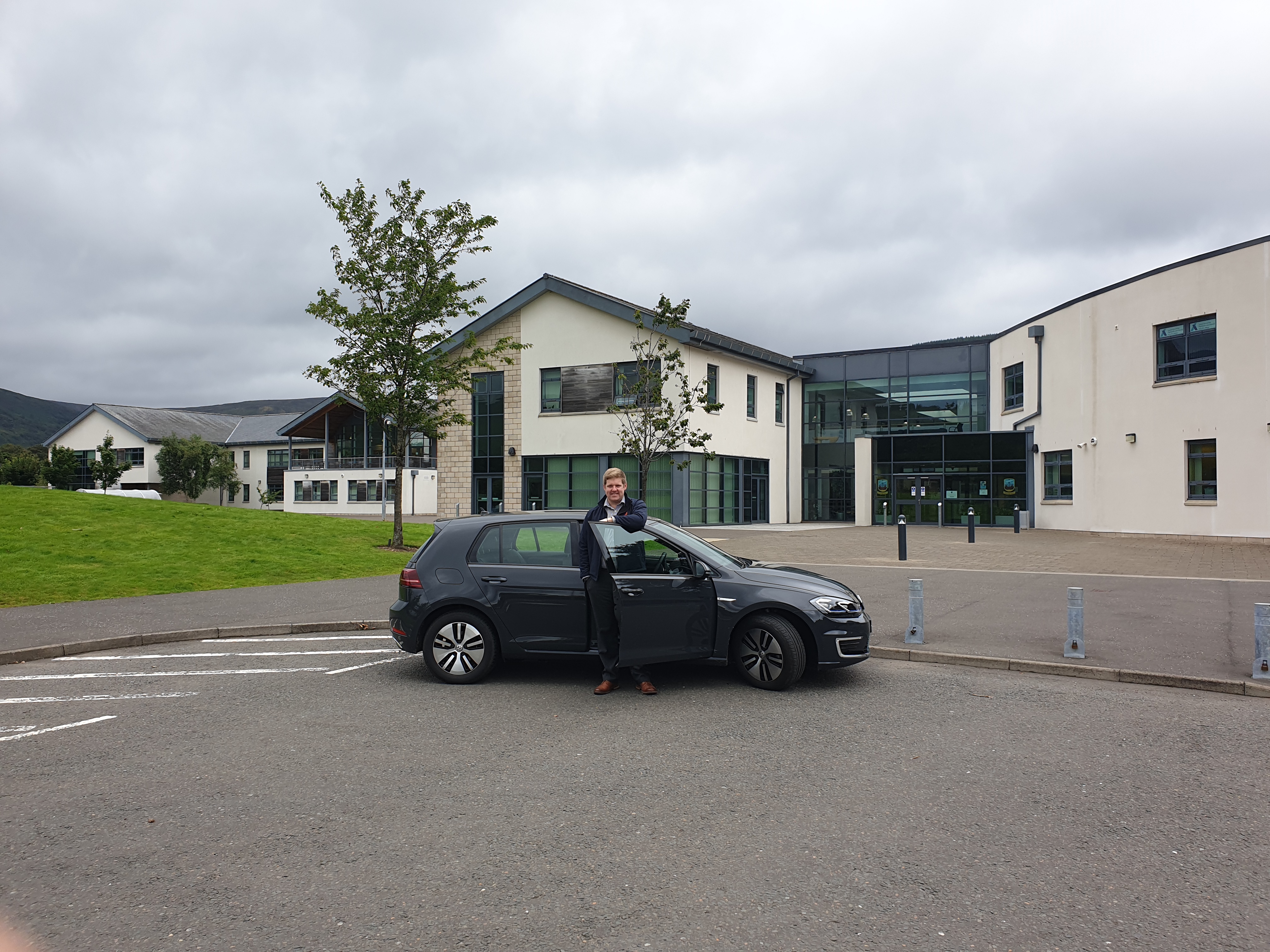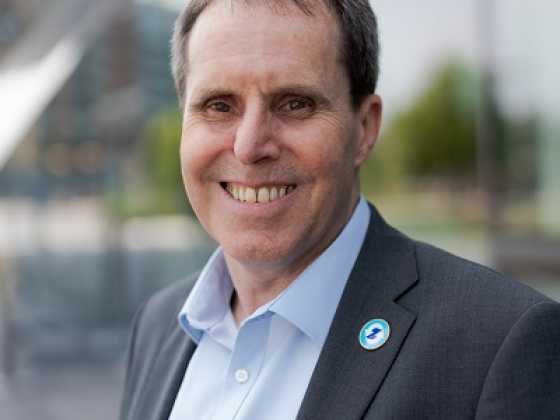Serious EV ambitions for Mitie's fleet

Picture above shows Mitie employee, Lee Girbow, with his new Volkswagen e-Golf at his work on the Isle of Arran
Facilities management and professional services company Mitie is serious about its switch to electric vehicles, having joined the EV100 initiative, achieved Go Ultra Low status, and signed the Clean Van Commitment. GreenFleet chats with Mitie's fleet and procurement director Simon King, on the company's big EV ambitions
What is your fleet mix and how are the vehicles used?
We have a fleet of approximately 5,300 vehicles – nearly 2,000 cars and around 3,300 vans. The majority of these are currently diesel, however, in May we began the rollout of our first electric vehicles. We have several dozen electric cars now on the roads throughout the country and our first electric vans are set to be delivered in September. This is the first realisation of a commitment we made at the start of the year to transform our fleet, ensuring 20% of our cars and compact vans are zero emission vehicles by the end of 2020. Having recently joined the EV100 initiative, we have now also committed to our entire fleet being zero emission by 2030.
With so many different types of Mitie vehicles on the road, our requirements are varied. Some are used by managers for travelling between different Mitie sites or attend client meetings, many of our vans are used by our engineers, meanwhile some are dedicated to specific client sites – for example we are planning to use an EV for our work with Historic Environment Scotland at Edinburgh Castle.
When did you start your electric journey and what were the deciding factors?
Our fleet is responsible for 93% of our business’ carbon footprint, so was the natural place for us to start in the fight against climate change. We started to explore transitioning our fleet to electric in 2018, and for us the decision was easy. As a business, social value is very important to us and we’re constantly trying to find ways we can help make the world a better place – whether that be environmentally or socially. The environmental case for switching to EVs is clear, and with their lower running and maintenance costs the financials make sense for our business too. For us it was a no brainer. It can often be the case that it’s difficult to persuade senior figures to approve sustainability measures, but our Chief Executive understood the benefits immediately.
Were there any challenges to start with? What did you learn in the early days of implementation?
When we initially launched our EV project internally, we had a fantastic response, with a very strong response rate for our fleet survey, with many employees indicating they’d be interested in an EV. However, when it came to actually switching, we found some drivers were more hesitant to commit.
To help overcome this and encourage more of our colleagues to get involved with the initiative, we held a series of roadshows at various Mitie offices across the UK. With representatives from the vehicle manufacturers and our charge point partner, Pod Point, we found having the experts on hand to answer questions and offering test drives made a massive difference. We had lots of colleagues who were initially uncertain signing up on the spot, leaving the events excited to get their new electric vehicle.
You've pledged to electrify your entire fleet by 2030 - do you anticipate any challenges to achieving this?
Given the large number of electric cars and vans that we are looking to procure, the biggest issue we face is being able to secure the volume of vehicles we need to meet our ambitious targets in a relatively short time frame. As a business that is used to buying thousands of vehicles a year, we are already finding supply a challenge.
Looking to the longer term, in order to electrify our entire fleet by 2030, then we need to see real, viable alternatives to diesel models for our larger van fleet. At the minute, there’s nothing out there, meaning we have some 2,000 vehicles that can’t yet be switched to electric. If we’re going to see widespread uptake of EVs across British fleets, this is something that urgently needs to be addressed. We want to be part of the solution, so we’re very keen to work with manufacturers and would encourage them to come speak to us about future vehicle development and trialling.
Tell me about the EV charging infrastructure you are putting in place?
Early on, the Mitie Fleet Team identified that access to adequate charging infrastructure throughout the country – Mitie has employees working across the length and breadth of the British Isles – would be one of our biggest challenges and a potential roadblock for our plans.
As such, we’ve made charge point installation a key part of our rollout. We’re working with our partner, Pod Point, to install 800 charge points. These will be at our own offices, client sites and at the homes of our employees that receive an EV. We’re proud of our investment in the nation’s charging infrastructure, but we need suppliers, government and local authorities to do more, so we can be confident that all our drivers will have access to a rapid charge point where and when they need it. We also want to see a more consistent approach to charge point use across providers. The current system whereby users may need a dozen different accounts or apps downloaded to their smart phone simply to grab 30 minutes charge, just isn’t sustainable.
How important is it to have a renewable energy tariff for the charging infrastructure?
To ensure a switch to EVs is having the most positive environmental impact, of course any company needs to consider how the energy they use to charge is generated. We’ve committed to ensuring that all of our offices use renewable energy – for everything from lighting to vehicle charging. However, with the majority of charging happening at our employees’ homes or at public charge points, implementing this across all vehicle charging poses a challenge.
In the longer term, we want to see a corporate renewable energy contract that allows us to extend to our employees’ home charge points, with the billing coming straight to Mitie. This will mean we can ensure we’re playing our part to help planet throughout the whole EV charging process.
What advice would you give other companies starting the electric journey?
Reflecting back on our journey, we would have engaged manufacturers even earlier to ensure we had firm commitments regarding the availability of vehicles.
We’ve also found consistent employee engagement is key – we have lots of enthusiasm for electric vehicles across the business, but also lots of questions and uncertainty too. From our experience offering the chance for drivers to ask all their questions and get in a vehicle and test drive for themselves, is vital to the successful implementation of EVs.






